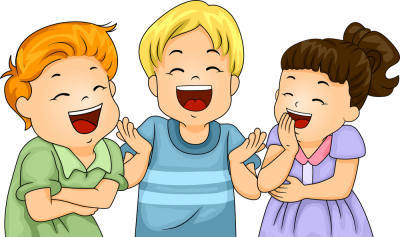
The following are three of the best examples from a large number of ‘children’s jokes’ doing the rounds on social media at the moment. Our interest in them has even been picked up by some papers, who call them in their headline ‘adorably awful kids jokes that will still make you laugh.’ But why do they make us laugh, and what else dothey do?
Joke 1: What came first the Hen or the Egg? Hen is first.
Joke 2: If you want to go to the ham contest what will the
man say? You won last year you are not allowed.
Joke 3: Why did the skittle go bowling? Because he is a part
of bowling.
In ‘laughter theory’ there are two broad camps of people
‘explaining’ how laughter works. There
are those who claim, following Thomas Hobbes’ famous argument in Leviathan, that laughter arises from a
perception of our own superiority over others.
Opposed to these, there are those who argue (in some ways following
Freud) that laughter involves a feeling of ‘liberation’, freeing us from
constraints we are usually held by.
It seems that these kids’ jokes might involve a bit of each,
making them cause a kind of double laughter.
We can certainly see the element of superiority here: laughing at the
child’s failure to understand the construction of the joke. We can also feel liberated, enjoying the
disruption of the rigid joke form and laughing at the diversion caused by an
unexpected and irregular answer.
What does this do? It seems to simultaneously re-enforce two
cultural ideas. First and most obviously,
that adults are smarter and more complex than children. Second, that children are more free and less
held by social orders and constructions, more inclined to ‘liberated’
expression. Both of these could explain
our laughter and show how the joke reenforces relatively normative ideas about
the relationship between adults and children. The Mirror headline about
these jokes embodies all this: the jokes are ‘adorable’ because they re-enforce
our concept of children as innocently free and liberated, and they are ‘awful’
because they are inferior to the properly constructed jokes of adults.
But there is more. There
is something more anxious about these jokes, something almost uncanny about
them. In each case of the three
jokes above the answer is a rule
that the child has unconsciously internalized and each of the answers is
delivered out with authoritative power. What they troublingly show us is that the child has successfully
internalized something about the joke’s capacity to create a position of power
which allows the teller to deliver the law onto the audience of the joke. Perhaps our laughter is an anxious one,
indicating insecurities that we feel when confronted with arbitrary power in
the hands of someone we cannot trust to stick to the rules, a position we often
find ourselves in today.

Children’s jokes ask that ideas such as this are deconstructed.

